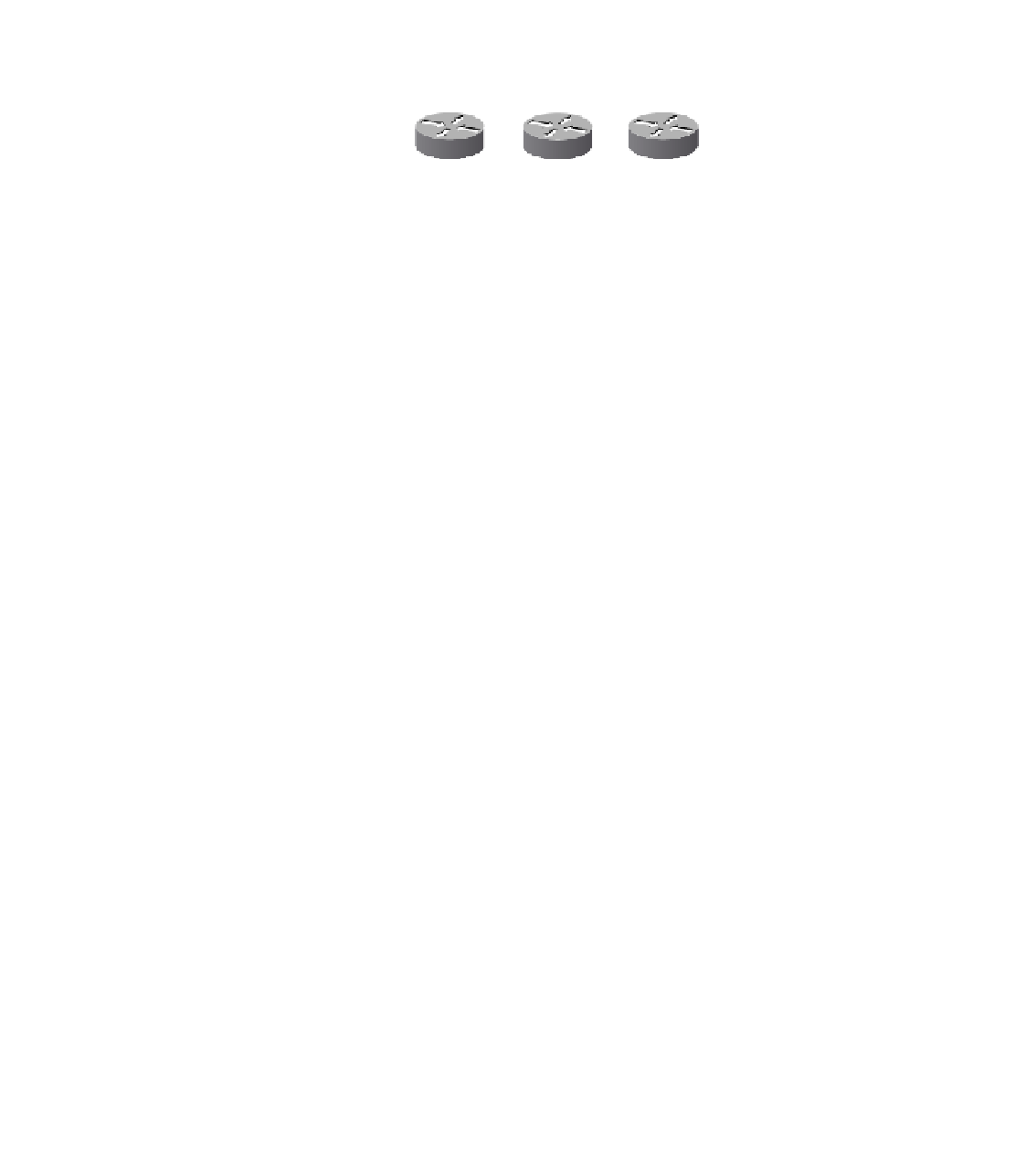Information Technology Reference
In-Depth Information
Simple Split Horizon Example
Figure 2-9
Router 1
Router 2
Router 3
Network A
Network B
Network C
Network D
With split horizon, Router 2 sends Network
A and Network B routes to Router 3. No route
for Network D is sent to Router 3.
With poison reverse, Router 2 sends
Network A and Network B routes to Router 3.
Also, it sends a route for Network D with
an infinite metric.
Split Horizon with Poison Reverse
Split horizon with poison reverse is a route update sent out an interface with an infinite metric
for routes learned (received) from the same interface. Poison reverse is a technique that enables
split horizon to say that the learned route is unreachable. Poison reverse is more reliable than
simple split horizon. Refer to the example in Figure 2-9. Instead of suppressing the route for
Network D, Router 2 sends that route in the routing table but it is marked as unreachable. In
RIP, the poison reverse route is marked with a metric of 16 (infinite).
Counting to Infinity
Some routing protocols keep track of router hops as the packet travels through the network. If
the maximum limit is reached, the packet is discarded. It is assumed that the network diameter
is smaller than the maximum allowed hops.
Tr iggered Updates
Another loop prevention and fast convergence technique that routing protocols use is triggered
updates. When a router interface changes state (up or down), the router is required to send an
update message, even if it is not time for the periodic update message. An immediate notifica-
tion about a network outage is key to maintaining valid routing entries within all routers in the
network. Some distance vector protocols, including RIP, specify a small time delay to avoid
triggered updates generating excessive network traffic.
















Search WWH ::

Custom Search